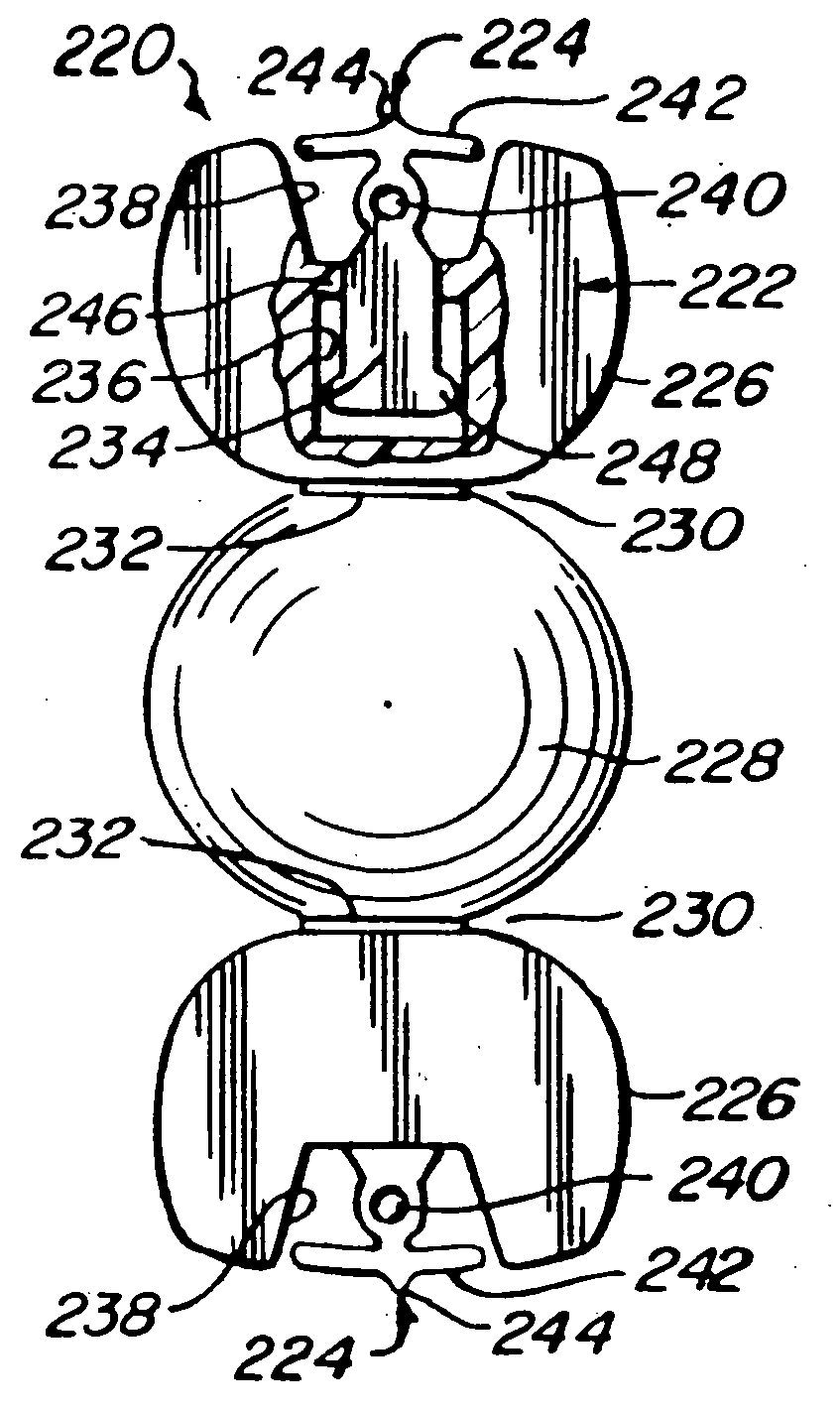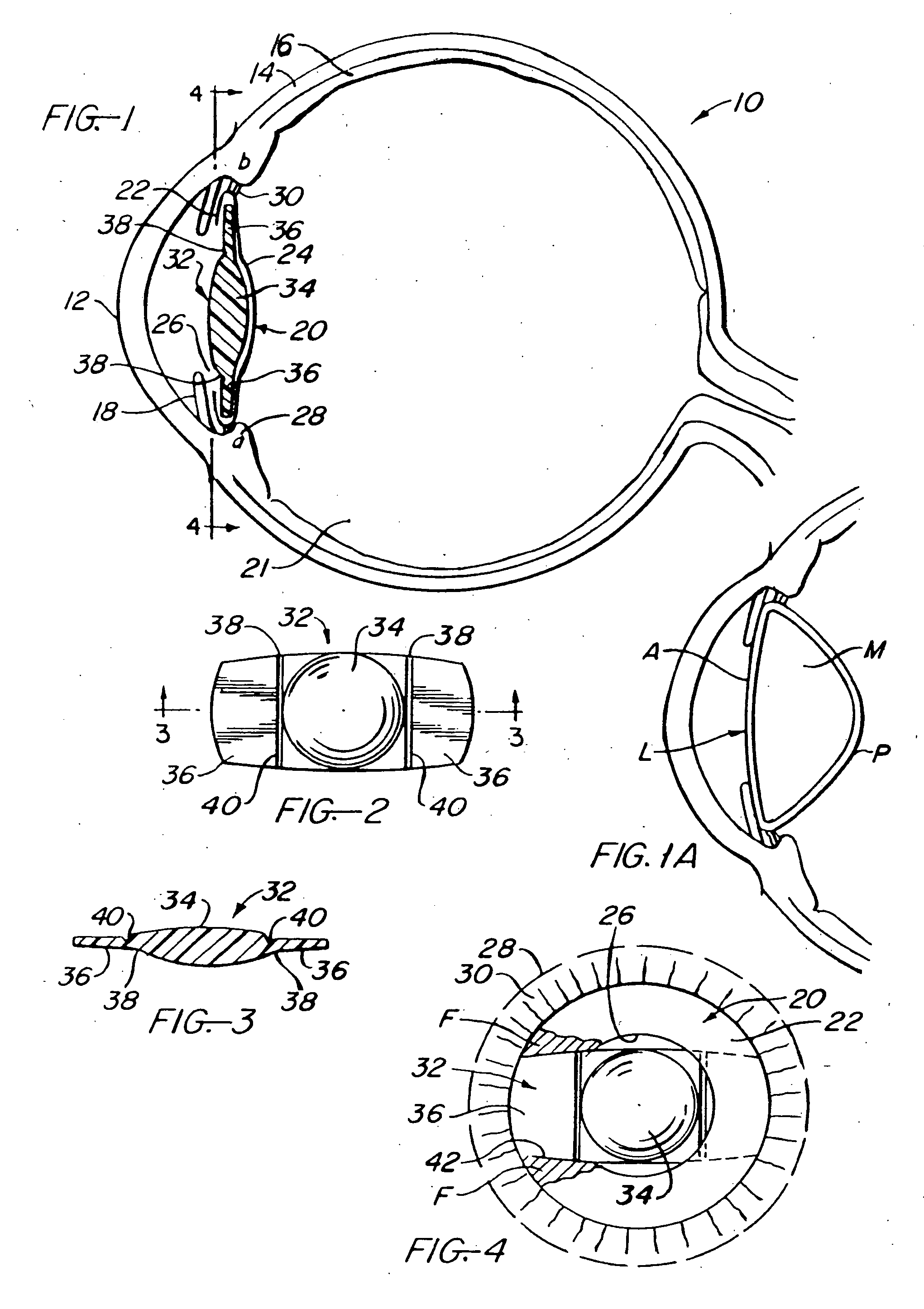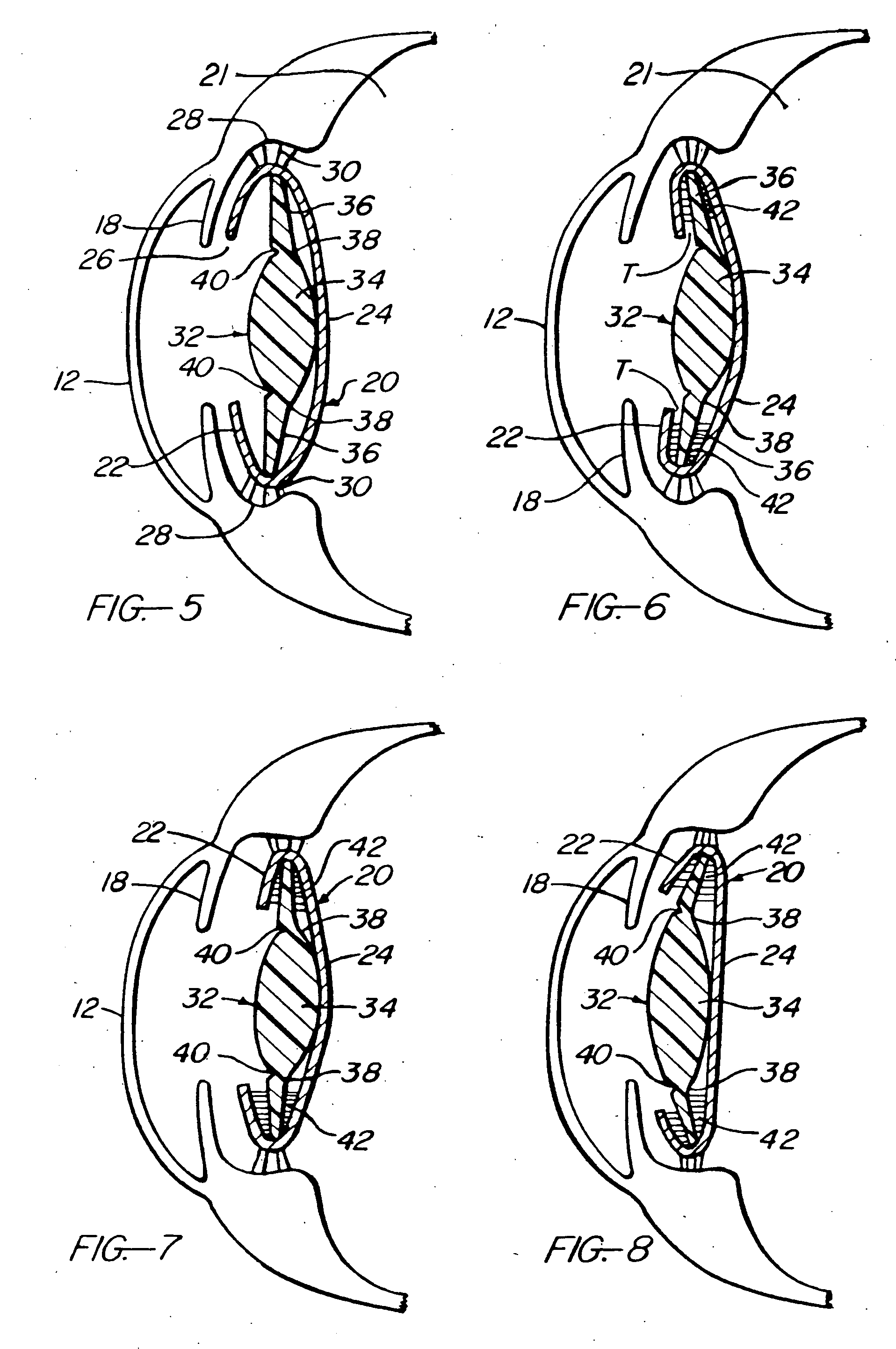Accommodating intraocular lens
- Summary
- Abstract
- Description
- Claims
- Application Information
AI Technical Summary
Benefits of technology
Problems solved by technology
Method used
Image
Examples
Embodiment Construction
[0078] Turning now to these drawings and first to FIGS. 1 and 1A, there is illustrated a human eye 10 from which the natural crystalline lens matrix was previously removed by a surgical procedure involving an anterior capsulotomy, in this case a continuous tear circular tear capsulotomy, or capsulorhexis. The natural lens comprises a lens capsule having elastic anterior and posterior walls A and P, respectively, which are referred to by ophthalmologists and herein as anterior and posterior capsules, respectively. The natural lens capsule (FIG. 1A) contains a normally optically clear crystalline lens matrix M. In many individuals, this lens matrix becomes cloudy with advancing age and forms what is called a cataract. It is now common practice to restore a cataract patient's vision by removing the cataract from the natural lens and replacing the lens matrix by an artificial intraocular lens.
[0079] As mentioned earlier, continuous tear circular capsulotomy, or capsulorhexis, involves ...
PUM
 Login to View More
Login to View More Abstract
Description
Claims
Application Information
 Login to View More
Login to View More - R&D
- Intellectual Property
- Life Sciences
- Materials
- Tech Scout
- Unparalleled Data Quality
- Higher Quality Content
- 60% Fewer Hallucinations
Browse by: Latest US Patents, China's latest patents, Technical Efficacy Thesaurus, Application Domain, Technology Topic, Popular Technical Reports.
© 2025 PatSnap. All rights reserved.Legal|Privacy policy|Modern Slavery Act Transparency Statement|Sitemap|About US| Contact US: help@patsnap.com



